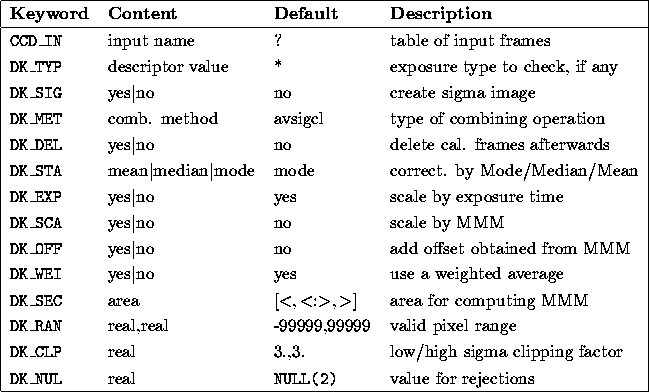Similarly to the bias combination one can obtain an average dark current
frame. However, one should consider whether the dark correction should
really be applied: one needs a reasonable number of dark frames in order
not to degrade the S/N, and obviously this takes telescope time. Because
the dark level depends on the exposure time, weighting the input dark
frames should be considered. Another possibility would be simply to take
the average dark value and to scale that number with the exposure time.
Filter type is not important. Table ![]() shows the
default setting for combining dark frames.
shows the
default setting for combining dark frames.

Table: Keywords for combining dark calibration frames
If the bias is stable enough to allow taking averages, one might argue that it is not really needed. In that case, provided a good linearity of the CCD, one could do with the subtraction of an average dark frame. If the bias is unstable, one should be careful with simply combining bias frames. In that case the better solution might be an average of two bias frames, taken just before and after each flat or sky exposure.